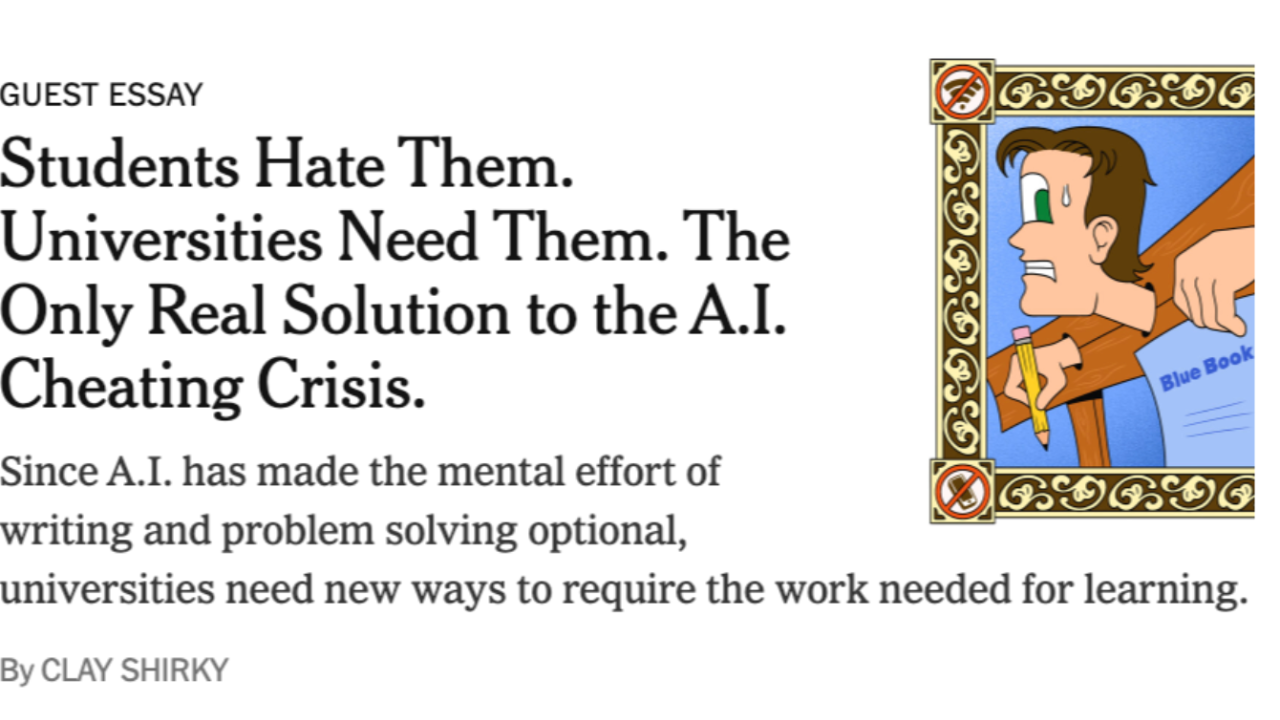A Rebuttal to Clay Shirky New York Times Article: Thinking Beyond Blue Books, Rethinking AI, and the Future of Learning
Sep 11, 2025
A Rebuttal to Clay Shirky New York Times Article: Thinking Beyond Blue Books, Rethinking AI, and the Future of Learning
Clay Shirky is right about one thing: higher education is not in the information transfer business. But where he sees salvation in a return to medieval blue books and oral exams, I see something more expansive, more urgent.
See Clay's The New York Times article here: https://www.nytimes.com/2025/08/26/opinion/culture/ai-chatgpt-college-cheating-medieval.html
The future classroom will not be built on nostalgia for what once was, nor on blind adoption of whatever tool is newest. It will be forged in the interplay between ancient practices of dialogue and presence, theater’s improvisational energy, and emerging technologies that extend human imagination.
Imagine a learning space where the viva voce of medieval universities collides with AI co-pilots; where Socratic questioning flows seamlessly into a digital whiteboard of ideas prototyped in real time; where the silence of a blue book exam is balanced with the improvisational “yes, and” of collaborative creation. This is not regression to the past (please let's not pretend anymore 2020 didn't happen) it is evolution toward a multimodal, multi-sensory, deeply human classroom. An immersive learning experience that is being built right now.
At the The School of Creativity and Innovation, we've seen this fusion firsthand. In improv for innovation bootcamps, students step into roles as both teacher and learner simultaneously. They embrace vulnerability, hack fear into courage, and learn to communicate not just with words but with presence, gesture, and silence. Layered atop this are technologies, AI tools, virtual collaboration platforms, storytelling prompts, not as crutches, but as sparring partners that stretch imagination and amplify reflection.
https://www.theschoolofcreativityandinnovation.com/signup
What emerges is not simply skill-building. It is identity formation. Students learn not only what they know but who they are becoming. They experience education as a living practice: part medieval dialogue, part digital co-creation, part improvisational play. It is messy, relational, embodied, and profoundly human.
This raises the real question Shirky’s essay leaves unanswered: Are our universities ready to adapt? Are they prepared to embrace education not as a static defense against AI, but as a dynamic reimagining of human development in an age of technological abundance?
Where are the forward-thinking leaders who will champion this vision? Who will invest in classrooms that blend the relational intimacy of the past with the creative expansiveness of the future?
The answer cannot be to turn back. The answer is to weave a new tapestry of learning — one that celebrates spontaneity, embraces technology as a partner, and builds identities equipped not just to survive, but to shape the unfolding future.
The classroom of tomorrow is not medieval. It is human, dynamic, and alive.
